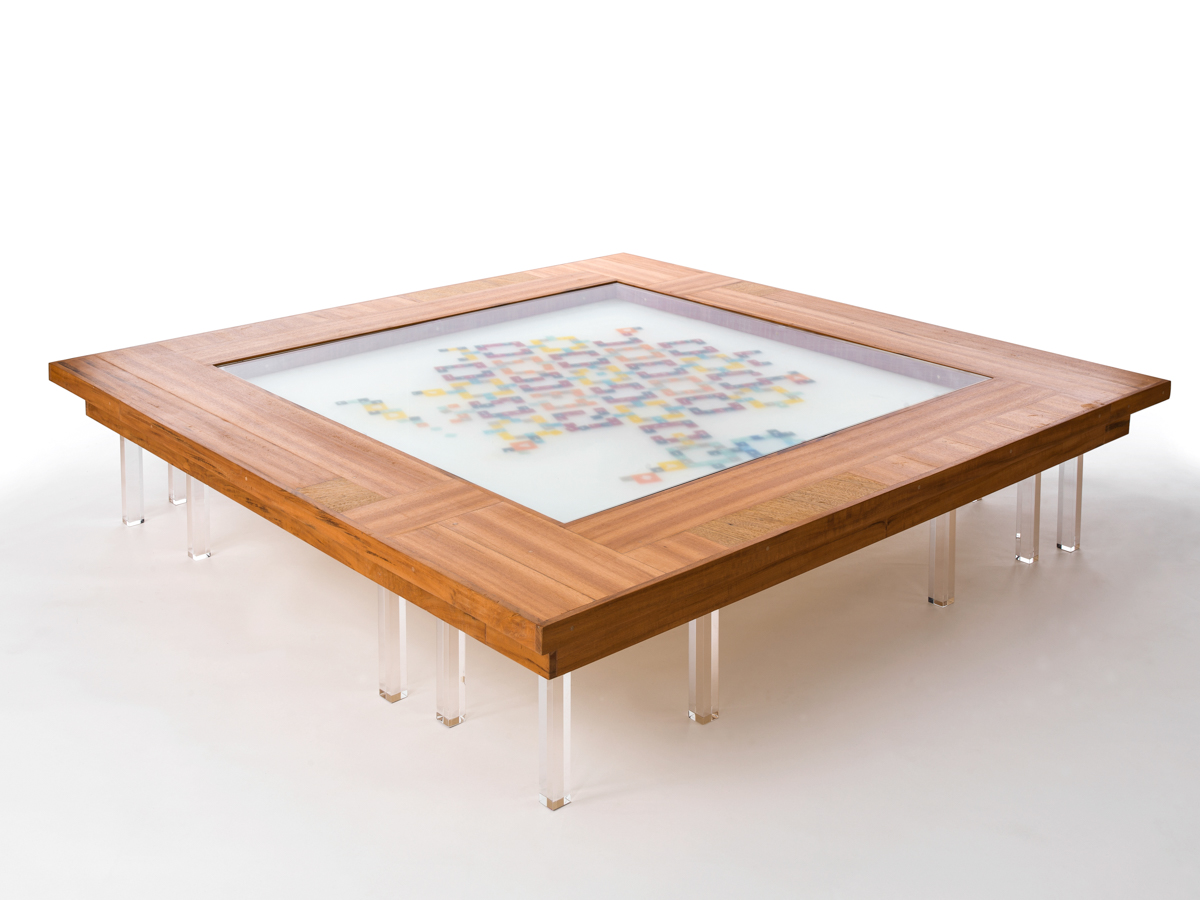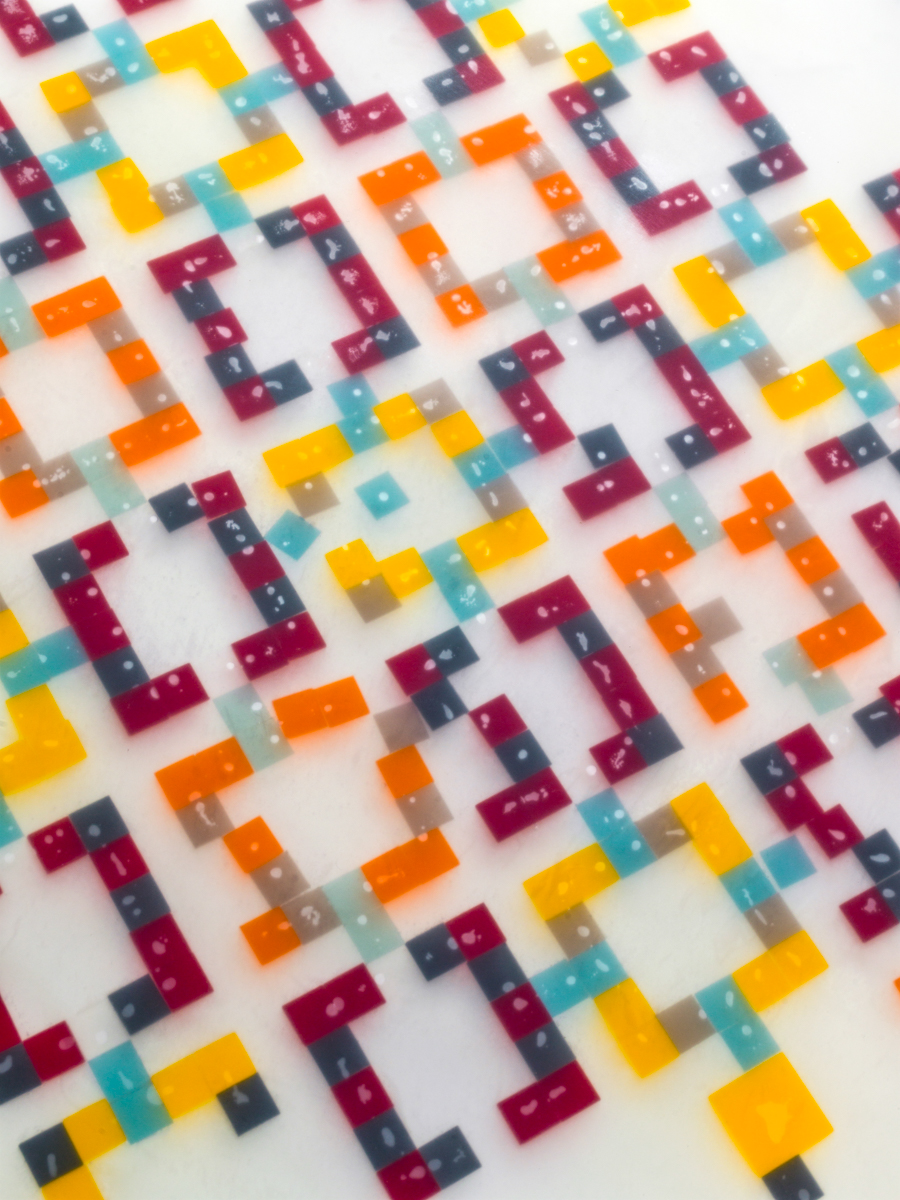The mosaiced coffee-table COBOGÓ is made of two Brazilian woods Muiracatiara and Freijo, resin and acrylic.
The shape of the 16 table legs made of transparent acrylic recall the palafitts of Amazon river houses which were raised on piles to protect them against flooding. They were most likely an indigenous creation by the Amerindians in pre-Columbian times. The centre of the table top reveals a composition made of colourful mosaic tiles that refer to a very important element of Brazilian culture, architecture and design, the so-called 'cobogó'.
Cobogó is a regional word and invention patented by three engineers in Recife in the Twenties. It is a three-dimensional perforated element made of concrete used to separate spaces but without sealing them completely. The function of the 'cobogó' was to protect against the hot Brazilian sun whilst allowing some privacy and the wind to blow through. As the light was filtered in an interesting way it started to be considered not only as functional but also as aesthetically pleasing and nowadays in San Paulo you see 'cobogós' everywhere. Whilst observing this relative of Portuguese tiles, which take their origins from the Arabic world, we noticed patterns that repeated quite often. Some of them seemed to be universal ancient symbols.
Indeed some of these symbols are identical to the letters of the tupi-guarani alphabet of the Marajoara culture - a pre-Columbian complex society that flourished on the Marajó island at the mouth of the Amazon River. The Marajó culture belongs to the Tupi people who inhabited almost all of Brazil's coast when the Portuguese first arrived there. The Tupi people were one of the most important indigenous peoples in Brazil who left a strong mark on the Portuguese language of Brazil. Tupi has given Brazilian Portuguese not only many thousands of words and multiple names of locations but also its strong nasal sound.
Used materials: handcrafted Amazonian woods (Muiracatiara and Freijo), acrylic, resin, glass
Dimensions: cm L 150 x D 150 x H 30 | unique edition: 10 + 1 a.p.
Concept: Nat Wilms | Design: Nat Wilms & Andrea Zambelli


